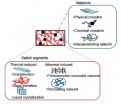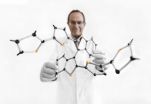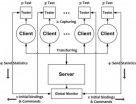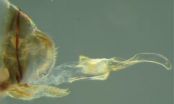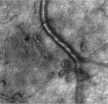(Press-News.org) Polymers that exhibit shape-memory effect (SME) are an important class of materials in medicine, especially for minimally invasive deployment of devices. Professor Subbu Venkatraman and his group from School of Materials Science and Engineering, Nanyang Technological University presented a review article surveying the clinical applications of the SME and addressing critically the question of its utility in implantable devices. Their work, entitled "Biomedical applications of shape-memory polymers: How practically useful are they?", was published in SCIENCE CHINA Chemistry.2014, Vol 57(4).
The shape-memory effect, as exhibited by metal alloys such as nitinol as well as many polymers, is the ability of a material to change its dimension in a predefined way in response to an external stimulus. For the many medical implants that can be deployed in the body using minimally invasive means, the implant dimension should be small during deployment and must regain a larger shape after deployment. Examples of such devices include stents, heart valves and septal defect occluders. As the range of available materials expands, so will the range of applications. Although the filed has been long dominated by one single material, nitinol (an alloy of nickel and titanium), polymers are challenging this dominance because they offer more functionality than simple ease of deployment.
For instance, a polymer that exhibits the SME could be biodegradable as well as drug-eluting, two functions that are impossible to achieve with nitinol. Thus, a biodegradable implant made of SMP loaded with therapeutic agent could be compressed and delivered inside the body, still in its compact form, via minimally invasive surgery. Once the implant is placed in the targeted site, it can be simultaneously recovered to its larger primary shape (triggered by body heat or other means) and one or more drugs can be released from the SMP matrix. Finally, the implant degrades, which eliminates the need for a second surgery for explanation. Developing this novel concept into practice has engaged the attention of researchers from both academia and industry, as reflected in the rapidly increasing number of publications on SMPs since 2003.
Over the past decade, various types of SMPs have been developed. A generalized SMP architecture is depicted in figure below. Based on this diagram, SMPs can be typically broadly categorized by their stimulus into two main streams: thermally and athermally induced SMEs. A thermoresponsive SMP can be thermally actuated by increasing the environment temperature above its thermal transition by either direct or indirect (i.e. magnetic or electrical) heating. Athermoresponsive SMP, however, can be actuated by stimuli other heat (e.g. light and solvent).
Despite of the numerous SMPs being developed, the kinetics of shape recovery is one of issues needed to be addressed to accelerate the rate of translation of the concept to approved products. Stent is one of the main targets for SMPs development in medical devices. For instance, a laser-actuated SMP stent prototype fabricated from polyurethane was developed by Baer et al. The stent was crimped over a fiber-optic light diffuser coupled to an IR diode laser for photo-thermal actuation of the stent. Under zero flow condition, the stent was fully recovered / expanded within 6 minutes in vitro. In general, the speed of recovery is more important than the extent of recovery for SMP stents. The crimped (or sheathed) stent must recover to anchor itself in the vessel within 1-2 min. Therefore, options such as water-induced or light-induced SMEs are not the best options for stents. Generally, the SMP stents based on nitinol are pre-recovered but constrained in a sheath until deployment at the site by slow sheath removal. This is the best way to meet the rate-of-recovery requirements.
Another issue to be addressed is sterilization for SMP-based medical devices. All medical devices must undergo sterilization before they can be used clinically. Conventional methods of sterilization listed in the US FDA guide include exposure to steam, ethylene oxide (EtO), irradiation (gamma or e-beam) and plasma treatment. Virtually all methods have their own merits and disadvantages, depending on the mode of SME activation that is envisaged. Therefore, identifying an appropriate process that can achieve the required sterility without compromising the SMP properties is challenging. In general, autoclave (steam) sterilization is not suitable for use with thermal SMPs due to its high temperature range, which can delete the shape-memory effect and also damage drugs that are embedded within the polymer matrix. By far, EtO sterilization is the gold standard of the low-temperature sterilization methods. Numerous research teams have studied the impact of EtO sterilization of various polymeric materials and have obtained promising results, with maintenance of the shape-memory effect. However, due to moisture ingress during EtO sterilization due to the high humidity levels usually employed, this method is not suitable for water-activated SMPs. Currently, unconventional low-temperature sterilization methods are under development such as noxilizer (room temperature NO2-based sterilization technology) and dense carbon dioxide gas sterilization. Both techniques can be performed at even lower temperatures (25-34°C) than the conventional sterilization methods. This possibility would eliminate any potential for premature activation of SME during sterilization, even when the activation temperature is at body temperature.
Overall, SMPs are an important class of materials in medicine. Nevertheless, we find that the rate of translation of the concept to approved products is extremely low, with mostly nitinol-based devices being approved. Further success will depend upon overcoming the problem of shape-memory loss during storage and sterilization, as well as upon improving the kinetics of shape recovery.
INFORMATION:
See the article:
Wong Y S, Kong J F, Widjaja L K & Venkatraman S S. Biomedical applications of shape-memory polymers: how practically useful are they?. SCI CHINA Chemistry, 2014 Vol. 57 (4): 476-489
http://chem.scichina.com:8081/sciBe/EN/abstract/abstract513788.shtml
Science China Press Co., Ltd. (SCP) is a scientific journal publishing company of the Chinese Academy of Sciences (CAS). For 60 years, SCP takes its mission to present to the world the best achievements by Chinese scientists on various fields of natural sciences researches.
http://www.scichina.com/
Biomedical applications of shape-memory polymers: How practically useful are they?
2014-04-17
ELSE PRESS RELEASES FROM THIS DATE:
More effective kidney stone treatment, from the macroscopic to the nanoscale
2014-04-17
Researchers in France have hit on a novel method to help kidney stone sufferers ensure they receive the correct and most effective treatment possible.
Kidney stones represent a major medical problem in the western and developing world. If left untreated, apart from being particularly painful, they can lead to renal failure and other complications. In many patients treated successfully, stone recurrence is also amajor problem. Clearly a more effective pathological approach to diagnosis and treatment needs to be identified to ensure successful eradication of stones.
Worldwide ...
Structure of sodium channels different than previously believed
2014-04-17
Sodium channels are implicated in many serious conditions such as heart disease, epilepsy and pain, making them an important potential target for drug therapies. Unfortunately, there is still much scientists do not know about the molecules. New Cambridge research provides fresh and unexpected insight into the structure of sodium channels and, specifically, one of its components - β-subunit molecules - which are responsible for 'fine-tuning' the activity of the channel. The research is published in the most recent edition of the Journal of Biological Chemistry.
Nerves ...
Chiral breathing: Electrically controlled polymer changes its optical properties
2014-04-17
Electrically controlled glasses with continuously adjustable transparency, new polarisation filters, and even chemosensors capable of detecting single molecules of specific chemicals could be fabricated thanks to a new polymer unprecedentedly combining optical and electrical properties.
An international team of chemists from Italy, Germany, and Poland developed a polymer with unique optical and electric properties. Components of this polymer change their spatial configuration depending on the electric potential applied. In turn, the polarisation of transmitted light is ...
Testing protocols in Internet of Things by a formal passive technique
2014-04-17
Protocol conformance and performance testing are two branches of testing designed to determine compliance and performance of protocol implementations to their standard. Dr. CHE Xiaoping and Dr. MAAG Stephane from Laboratory UMR 5157 of French Centre national de la recherché scientifique (CNRS) focus on converging these two kinds of testing in a same formal approach. After several years of innovative research, they eventually created a formal approach to formally specify conformance and performance requirements. They successfully applied their approach on Extensible Messaging ...
New evidence of suicide epidemic among India's 'marginalized' farmers
2014-04-17
A new study has found that India's shocking rates of suicide are highest in areas with the most debt-ridden farmers who are clinging to tiny smallholdings – less than one hectare – and trying to grow 'cash crops', such as cotton and coffee, that are highly susceptible to global price fluctuations.
The research supports a range of previous case studies that point to a crisis in key areas of India's agriculture sector following the 'liberalisation' of the nation's economy during the 90s. Researchers say that policy intervention to stabilise the price of cash crops and relieve ...
Methane climate change risk suggested by proof of redox cycling of humic substances
2014-04-17
The recent Yokahama IPCC meeting painted a stark warning on the possible effects of gases such as methane – which has a greenhouse effect 32 times that of carbon dioxide. Now a team of Swiss-German researchers have shown that humic substances act as fully regenerable electron acceptors which helps explain why large amount of methane are held in wetlands instead of being released to the atmosphere. However, there are worries that if this system is disrupted it may enter into a vicious cycle to release large amounts of methane back into the atmosphere.
Wetlands, such as ...
In sex-reversed cave insects, females have the penises
2014-04-17
Researchers reporting in the Cell Press journal Current Biology on April 17 have discovered little-known cave insects with rather novel sex lives. The Brazilian insects, which represent four distinct but related species in the genus Neotrogla, are the first example of an animal with sex-reversed genitalia.
"Although sex-role reversal has been identified in several different animals, Neotrogla is the only example in which the intromittent organ is also reversed," says Kazunori Yoshizawa from Hokkaido University in Japan.
During copulation, which lasts an impressive ...
Study shows lasting effects of drought in rainy eastern US
2014-04-17
This spring, more than 40 percent of the western U.S. is in a drought that the USDA deems "severe" or "exceptional." The same was true in 2013. In 2012, drought even spread to the humid east.
It's easy to assume that a 3-year drought is an inconsequential blip on the radar for ecosystems that develop over centuries to millennia. But new research just released in Ecological Monographs shows how short-lived but severe climatic events can trigger cascades of ecosystem change that last for centuries.
Some of the most compelling evidence of how ecosystems respond to drought ...
New technique detects microscopic diabetes-related eye damage
2014-04-17
BLOOMINGTON, Ind. -- Indiana University researchers have detected new early-warning signs of the potential loss of sight associated with diabetes. This discovery could have far-reaching implications for the diagnosis and treatment of diabetic retinopathy, potentially impacting the care of over 25 million Americans.
"We had not expected to see such striking changes to the retinas at such early stages," said Ann Elsner, professor and associate dean in the IU School of Optometry and lead author of the study. "We set out to study the early signs, in volunteer research subjects ...
Rapid and accurate mRNA detection in plant tissues
2014-04-17
Gene expression is the process whereby the genetic information of DNA is used to manufacture functional products, such as proteins, which have numerous different functions in living organisms. Messenger RNA (mRNA) serves as an important intermediary during gene expression, by relating the genetic information of DNA to the molecular mechanisms involved in manufacturing proteins.
By examining the different types and amounts of mRNA molecules present in an organism at a given time, researchers can determine which specific genes are being expressed. This, in turn, offers ...
